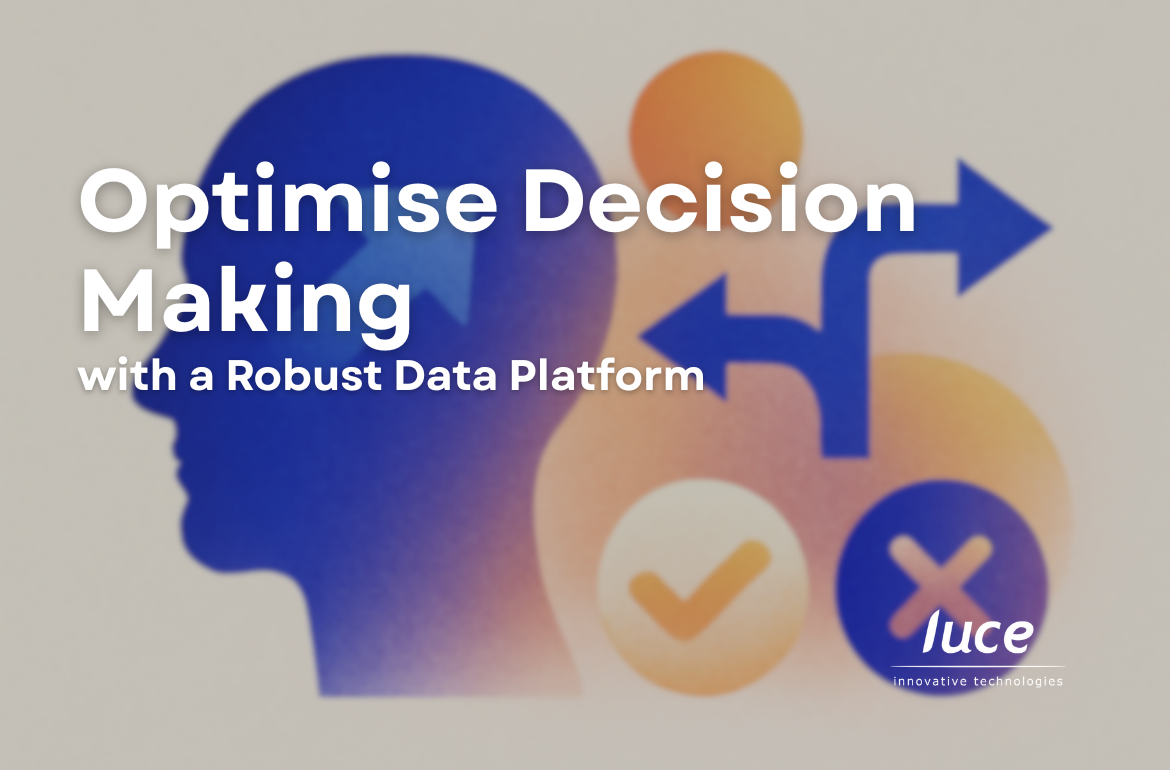
Common data quality errors and how to fix them
Data quality has become critical to the success of organisations. Poor quality data can lead to poor decisions, missed opportunities and, ultimately, a negative impact on business results. Yet, despite its importance, many organisations still make mistakes that compromise the quality of their data. Below, we discuss some of the most common mistakes and offer solutions to avoid them.
Failure to Access Full Information for Decision Making
One of the main challenges facing our customers, and why not ourselves, is the lack of access to all the information needed to make important decisions. The inability to generate customised, real-time reports that meet the changing needs of the business and its objectives can hinder the generation of new business opportunities or the achievement of objectives.
This problem results in less informed decisions, which can negatively affect the strategic direction of the company.
Economic Data Management: Cost and Time Optimisation
The concern for a cost-optimised architecture to support all the data an organisation handles is an ongoing one. If a data architecture is not optimised, unnecessary costs and slow processing times can arise, affecting both operational efficiency and the IT budget.
These costs will be particularly high in companies or public administrations that handle large volumes of data.
The Time Lost in Manual Data Collection and Analysis
How much time do you spend in your working day looking at or collecting data manually? Data analysis consumes valuable time that could be spent on more strategic tasks. Not only is this approach inefficient, it is also prone to human error, which decreases the accuracy of the data.
Maintaining Competitiveness Through Effective Use of Data
Any manager or decision-maker is concerned that their company will fall behind the competition and fail to meet the needs of their customers or users because they are not using data effectively.
Having access to a business intelligence solution to help us improve efficiency and stay competitive is the first step to staying competitive.
Difficulty in Identifying Patterns and Trends
Seeing patterns or trends in large data sets can be a complex task if you don’t have the right tools to help you analyse the information, and even more so if you don’t do it in real time.
Lack of clarity in data analysis prevents you from identifying opportunities for improvement or problem areas, and therefore from making the wrong decisions.
How to avoid data quality problems
Some of the most common solutions to this type of problem may be:
- Deploy a flexible business intelligence platform that allows users to access and customise reports according to their needs in real time. This not only improves decision making, but also enables a more agile response to market changes. BI solutions with predictive analytics and interactive visualisation capabilities can transform complex data into actionable insights, improving strategic decision making.
- Design an optimised data architecture that balances cost with performance. This can be achieved by adopting cloud solutions that offer scalability and pay-per-use, as well as by implementing data processing technologies that reduce wait times.
- Automate data collection and analysis to free up time and reduce errors with automation tools that integrate from different data sources. Furthermore, this data must be processed quickly and accurately, and the results presented in easy-to-interpret formats, allowing the focus to shift towards decision-making.
However, we recommend a more holistic approach to the challenge of data quality, as it affects all areas of the organisation and all stakeholders.
All of these solutions can be encompassed in a single vision, implementing a comprehensive Data Quality approach that controls data quality based on business rules and performs proactive monitoring. This approach reduces the risk of making decisions with incorrect data and ensures that the information used is accurate and reliable.
Having data quality software in place allows you to manage, analyse and optimise information efficiently and effectively, helping to improve productivity, reduce costs, increase customer satisfaction, identify business opportunities and comply with regulations and data quality standards.
In addition, using technology-agnostic software allows for seamless integration across multiple platforms, while the system of alerts to data managers ensures that any problems are detected and corrected quickly, maintaining data integrity and efficiency at all times.
If you still don’t know how to implement a data quality solution to help you manage, analyse and optimise all the information in your organisation, contact us and we will advise you.
Luce IT, your trusted technology innovation company
The history of Luce is a story of challenges and nonconformity, always solving value challenges using technology and data to accelerate digital transformation in society through our clients.
We have a unique way of doing consulting and projects within a collegial environment creating “Flow” between learning, innovation and proactive project execution.
In Luce we are going to be the best offering multidisciplinary technological knowledge, through our chapters, generating value in each iteration with our clients, delivering quality and offering capacity and scalability so that they can grow with us.
>> Would you like to work with Luce again?
>> Luce 2023 Master Plan: Winning the Game









